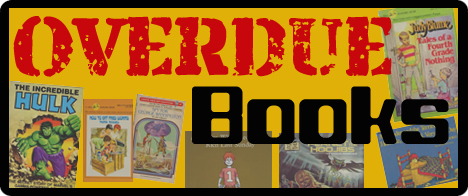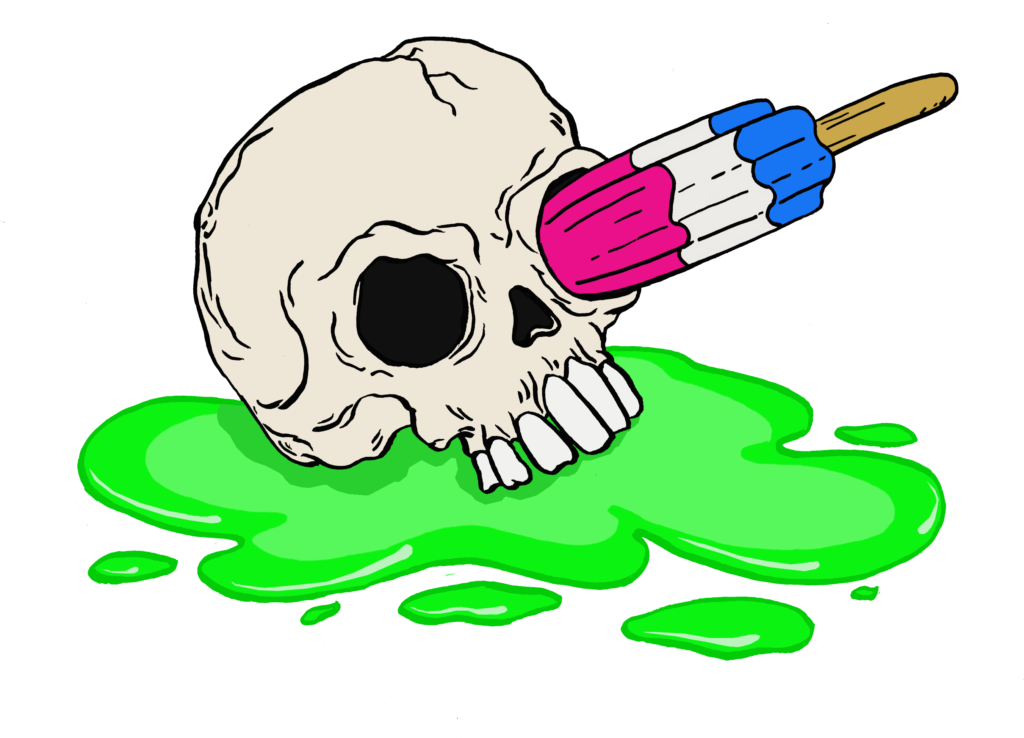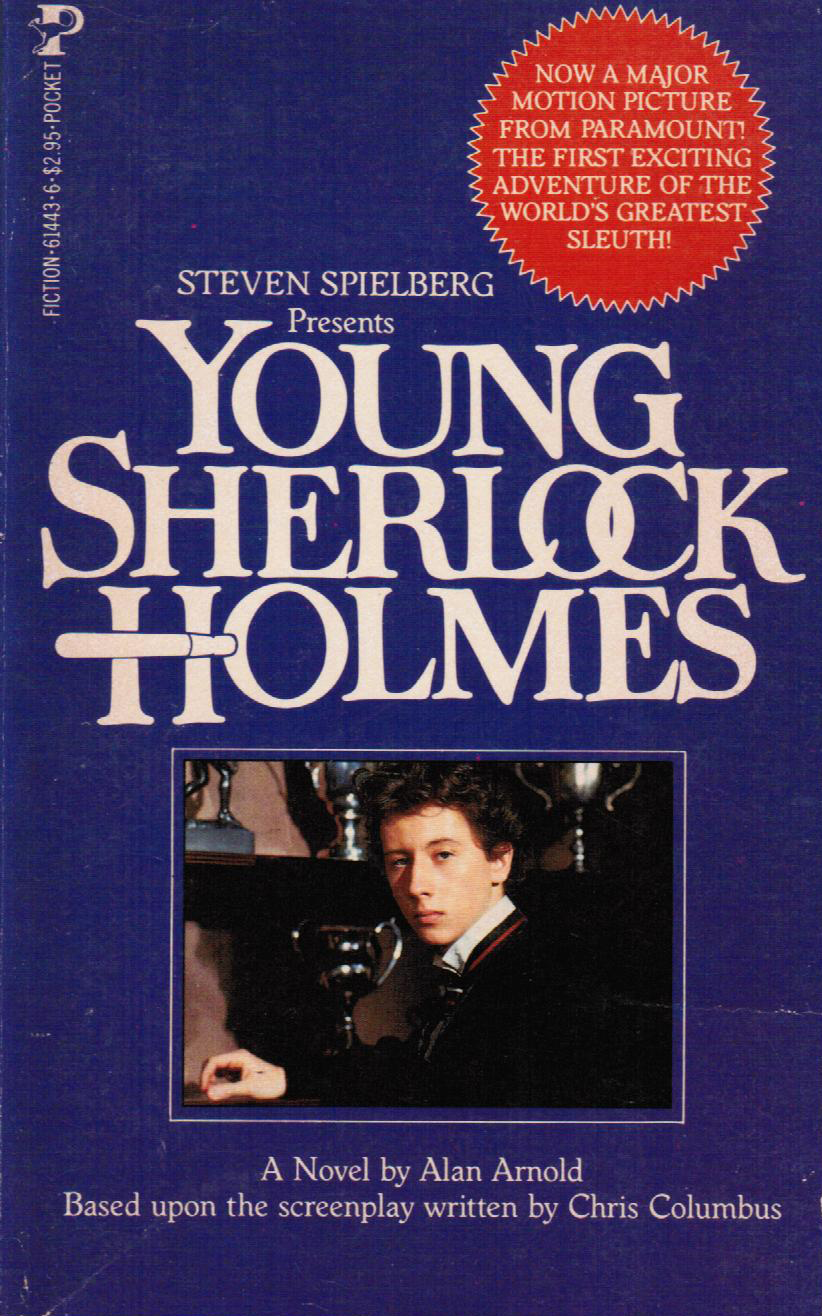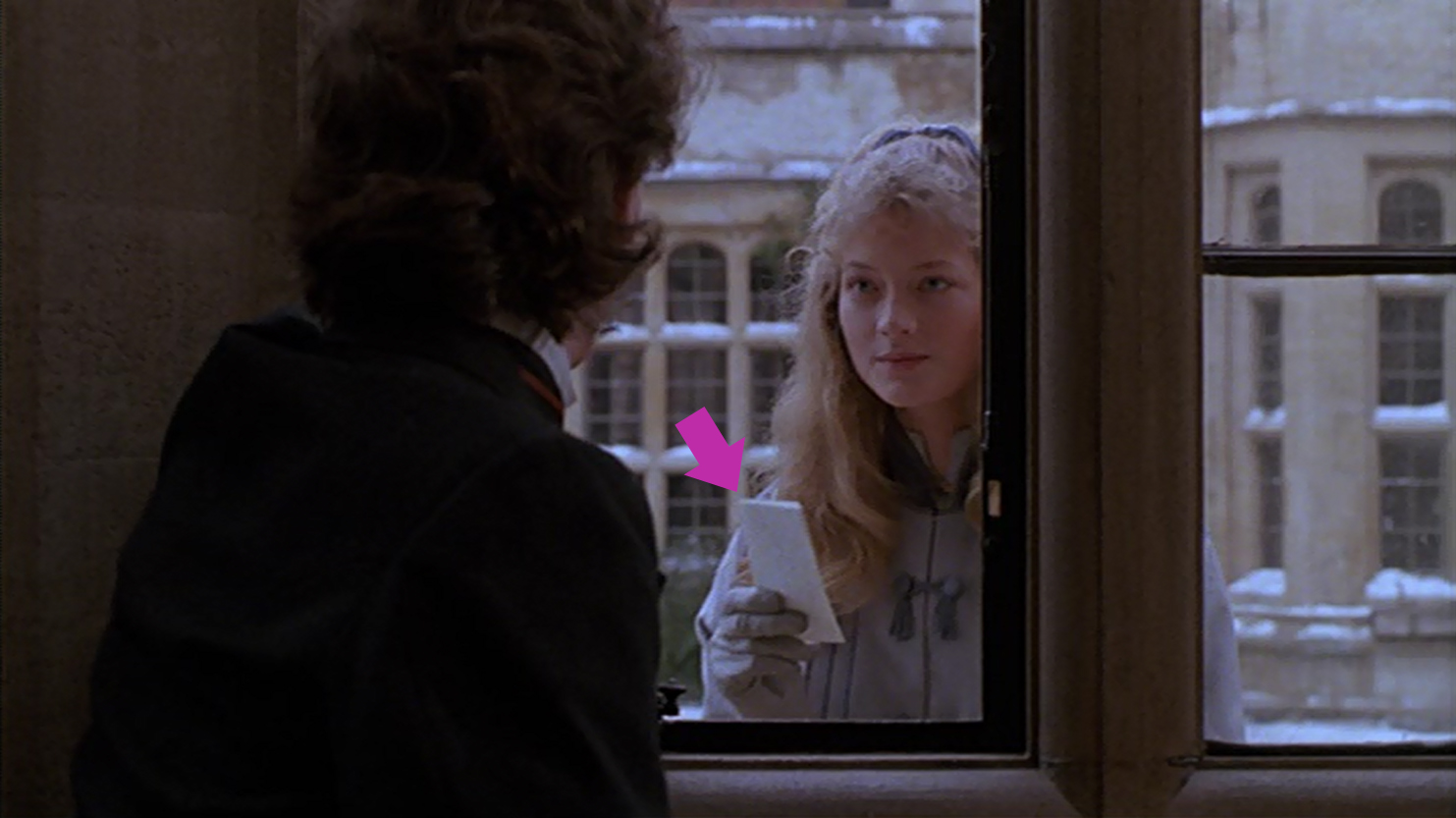 This past month it was my turn to pick the movie up for discussion on the Cult Film Club podcast (the show I co-host with my buds Paxton Holley and Jaime Hood), and since we’re in the dead of winter and I just moved up to Maryland and am experiencing boatloads of snow firsthand I wanted to choose something that was sufficiently wintery. I landed on the 1986 flick Young Sherlock Holmes which fit the bill weather-wise and also is a hugely nostalgic classic to me which is a lot like curling up in a blanket with a warm bowl of soup. I had a lot of fun chatting about the film on the show and digging through my Starlog archives to find a couple of vintage articles on the film that I shared over at the CFC website. This reminded me that I have one other Young Sherlock Holmes collectible, the movie novelization by Alan Arnold.
This past month it was my turn to pick the movie up for discussion on the Cult Film Club podcast (the show I co-host with my buds Paxton Holley and Jaime Hood), and since we’re in the dead of winter and I just moved up to Maryland and am experiencing boatloads of snow firsthand I wanted to choose something that was sufficiently wintery. I landed on the 1986 flick Young Sherlock Holmes which fit the bill weather-wise and also is a hugely nostalgic classic to me which is a lot like curling up in a blanket with a warm bowl of soup. I had a lot of fun chatting about the film on the show and digging through my Starlog archives to find a couple of vintage articles on the film that I shared over at the CFC website. This reminded me that I have one other Young Sherlock Holmes collectible, the movie novelization by Alan Arnold.
I’ve been meaning to crack the cover on this book for a while since it felt a bit heftier than your typical movie novelization which usually means that there are a few deleted or alternate scenes included. So this past weekend I finally curled up in bed and read the book cover to cover. First and foremost, much like the movie itself, the novelization is a love letter to Sir Arthur Conan Doyle in both style and tone. The whole Young Sherlock Holmes project was an interesting exercise in that everyone involved, from the actors and set designers to the writers and director, took pains to create a piece of fiction that felt like it was ripped straight out of the Holmes cannon. There are a lot of subtle details in the story that point to classic aspects of the character (both Doyle’s version as well as the many film and television adaptations that preceded this new story), none of which I feel beat the viewer over the head or effect the plot.
So the first thing you notice about the novelization is that it’s narrated in the voice of John Watson; just as all but four of the original Holmes stories were. The movie is also framed with an older Watson’s narration, but it’s used sparingly, mostly during scene transitions and never framing scenes where the main characters aren’t present. The book on the other hand is completely in the voice of Watson which can be a bit old when you consider that there are a handful of scenes where neither Watson, Holmes nor any living witnesses were present to see the events firsthand (such as the case of Bently Bobster’s unfortunate freak-out and eventual suicide that opens the story.) So it leaves the reader to assume that those segments are reconstructed or “fabricated” to fill in the blanks for the sake of the narrative.
That small gripe aside, Watson’s narration in the novelization is so rich with detail and anecdotal asides that it becomes a wholly different experience than a simple adaptation of the Chris Columbus script. In fact, the book is so densely packed that if one was compelled to research every anecdote Arnold mentions in the narration it might take you a couple years to finish the book. All in all, the majority of the differences between the novel and the film lay in these random observations and intensified descriptions of the locales and character backgrounds. Again, going back to the Bobster sequence there is a lot more detail into that character’s background, how he became so well off and a rather lengthy bit about his love of fine dining (and why he ultimately chose the restaurant where the film opens and he suffers from his first trippy hallucination where his pheasant dinner comes alive and attacks him.)
But there are some fun little deleted bits, stuff that feels very much in line with showcasing Holmes as a junior detective in training. We get a bit of this in the final film with stuff like the ongoing bear riddle between Holmes and Watson and the missing fencing trophy challenge between Holmes and Dudley, but there were more little brain teasers peppered in. For instance, when Watson and Holmes are in Chemistry class and Elizabeth taps on the schoolroom window and hands Sherlock a note. In the film we see her hand the note to Holmes and we watch as he reads it, but the contents of the note aren’t revealed. In the novelization (and I’m assuming the script as well) we find out that the note is actually a puzzle that reveals a meeting place for Sherlock to find Elizabeth later. It reads:
“Two brains merge into one,
Where the leaves of knowledge are stored
Near the men of dancing words
When the clock becomes a perfect L.”
After Holmes explains that the note means for him to meet her for a study session (brains merging) in the library (leaves of knowledge = books) poetry sections (dancing words) at 3:00pm (hands of the clock forming an “L”), he then proceeds to take a vial of chemicals that Watson was working with, adds some more stuff to the mixture and creates a dazzling fireworks display in the classroom to liven it up (if you remember from the film that professor is rather dull and sort of senile.) Again, nothing essential or earth shattering, just little bits that make the story way richer and fun to read. In fact, there’s another throwaway line in this segment that I found pretty awesome. So after Holmes lights up the chemistry class he and Watson make their way to the Library to meet up with Elizabeth. But Watson notes that they make a quick stop to pick up a newspaper and a bottle of cough syrup (which Holmes takes a large swig of) at the apothecary. For those versed in the lore of Holmes you’ll note that the character was an addict, and the fact that Arnold has him as a young lad starting down that road already drinking cough syrup is sort of fascinating. I highly doubt it that this made it into Columbus’ script, though now that I think about it there was that weird sexual moment in the Goonies novelization where Andy has an orgasm at an odd time. I attributed that bit of insanity to the author of that book, James Kahn, but maybe I’m not giving Chris Columbus’ scripts enough credit in the weird adult content department. Guess I need to track down copies of both of the scripts (Goonies and Young Sherlock Holmes) and find out for sure. To round out these small differences in the novelization, in the scene where Holmes meets up with Elizabeth he starts to explain why he was late and she stops him and then using the skills Holmes evidently already taught her she proceeds to retrace his exact steps much in the same manner that Holmes first guessed Watson’s name and attributes when they first met. Arnold and Columbus were definitely building up Elizabeth as Holmes’ equal which makes his admiration for her and the effect of her ultimate fate that much more poignant.
As far as other differences that I found interesting, there was one that I was surprised did not make the translations from script/film to novelization. This one is a rather larger spoiler, so if you haven’t seen the film, read at your own risk. In a very cool example of an after credits stinger scene, at the end of the film we see that the main villain of the story, Professor Rathe, didn’t perish in the icy river after the duel with Holmes. He made it out somehow and after a long carriage ride through the snowy woods he happens upon a rustic inn and rents a room. As he signs in on the ledger he uses a new name, Moriarty.
This whole segment is not included in the novelization which makes me wonder if the idea to include this was made during filming. Maybe the director, Barry Levinson, or the producer, Steven Spielberg, was really happy with how the filming was going and they decided to create the stinger to point to a potential sequel (something that would unfortunately never come to pass.)
All in all Alan Arnold’s adaptation of Young Sherlock Holmes is another shining example of how cool these 80s era film novelizations can be. For folks who love movies to death and who cherish finding all sorts of little obscure odds and ends that enrich the experience of watching their favorite flicks, novelizations are a freaking goldmine.




